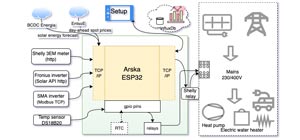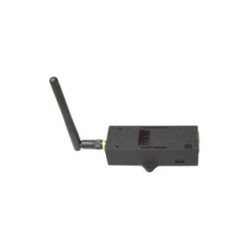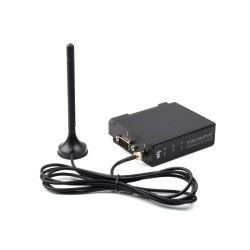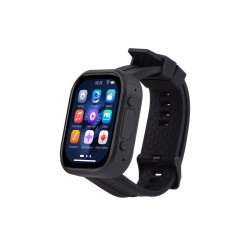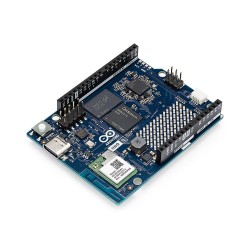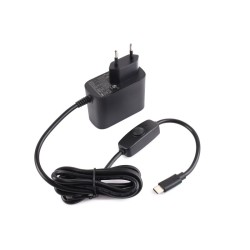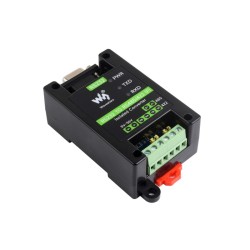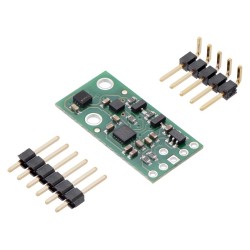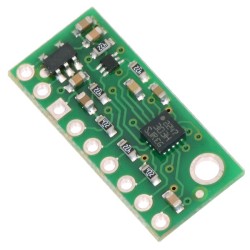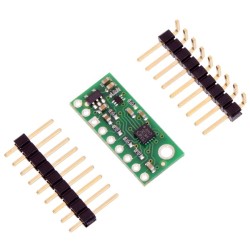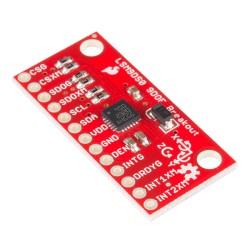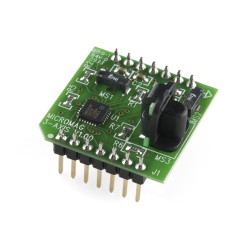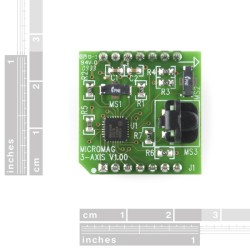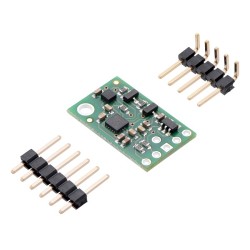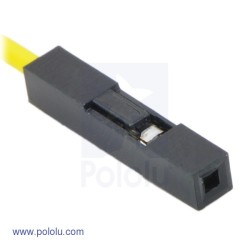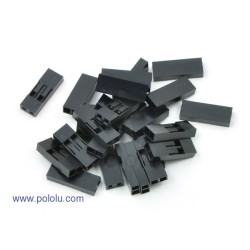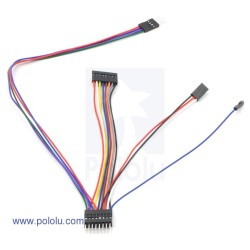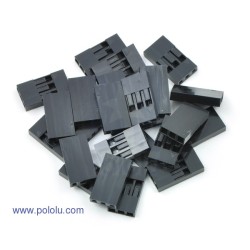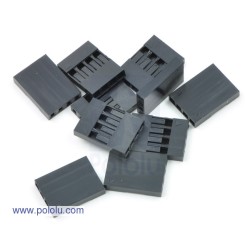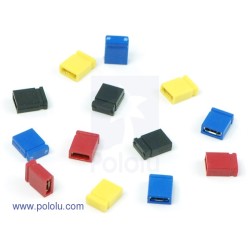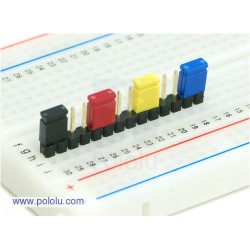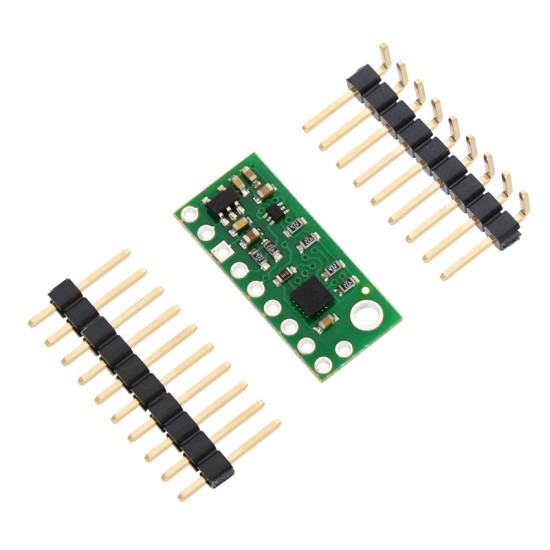
Description: This board is a compact (0.4″ × 0.9″) breakout board for ST’s L3GD20H three-axis digital-output gyroscope; we therefore recommend careful reading of the L3GD20H datasheet (3MB pdf) before using this product. The L3GD20H is a great IC, but its small, leadless, LGA package makes it difficult for the typical student or hobbyist to use. It also operates at voltages below 3.6 V, which can make interfacing difficult for microcontrollers operating at 5 V. This carrier board addresses these issues by incorporating additional electronics, including a 3.3 V voltage regulator and level-shifting circuits, while keeping the overall size as compact as possible. The board ships fully populated with its SMD components, including the L3GD20H, as shown in the product picture.
The L3GD20H has many improvements over the older L3GD20, including better accuracy and stability, lower power consumption, and a much shorter start-up time, all in a smaller package that allows the overall carrier board to be smaller. The L3GD20H also offers a wider range of user-selectable output data rates, with lower frequencies available that are more appropriate for human gesture detection, and it features a data enable (DEN) pin that allows readings to be synchronized with external triggers. While the L3GD20H carrier is not a direct drop-in replacement for the L3GD20 carrier due to differences in the pinout and sensor orientation, it should still be usable as a replacement with the appropriate wiring changes, and since the two ICs share the same register structure and I²C device address, code written for one should be easily portable to the other.
The L3GD20H has many configurable options, including three selectable angular rate sensitivities, seven selectable output data rates, seven different embedded FIFO modes for buffering output data, and a programmable external interrupt signal. The three angular velocity readings are available through a digital interface, which can be configured to operate in either I²C or SPI mode.
The carrier board includes a low-dropout linear voltage regulator that provides the 3.3 V required by the L3GD20H, which allows the sensor to be powered from 2.5 V to 5.5 V. The regulator output is available on the VDD pin and can supply almost 150 mA to external devices. The breakout board also includes a circuit that shifts the two I²C lines (or SPI clock and data-in lines) to the same logic voltage level as the supplied VIN, making it simple to interface the board with 5 V systems, and the board’s 0.1″ pin spacing makes it easy to use with standard solderless breadboards and 0.1″ perfboards.
For sensor fusion applications, our MinIMU-9 v3 and AltIMU-10 v4 inertial measurement units combine this L3GD20H with an LSM303D 3-axis accelerometer and 3-axis magnetometer on a single board, providing nine independent readings that can be used to calculate an absolute orientation. The AltIMU-10 v4 also includes an LPS25H pressure sensor that can be used to calculate altitude.
Specifications:
- Dimensions: 0.4″ × 0.9″ × 0.1″ (13 × 23 × 3 mm)
- Weight without header pins: 0.7 g (0.03 oz)
- Operating voltage: 2.5 V to 5.5 V
- Supply current: ~6 mA
- Output format (I²C/SPI): one 16-bit reading per axis
- Sensitivity range (configurable): ±245°/s, ±500°/s, or ±2000°/s
Documents: Read more
- Stock: 1
- Brand: Pololu
- Model: POLO/2129

